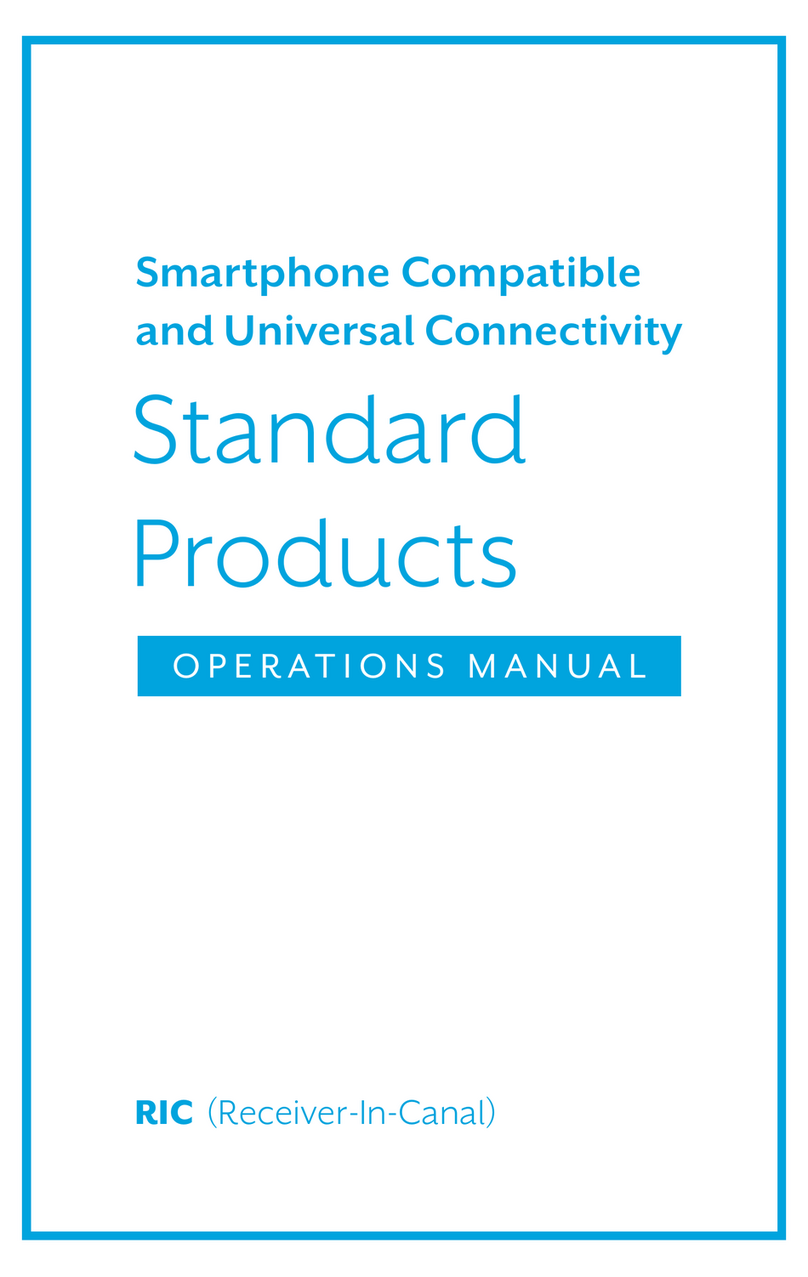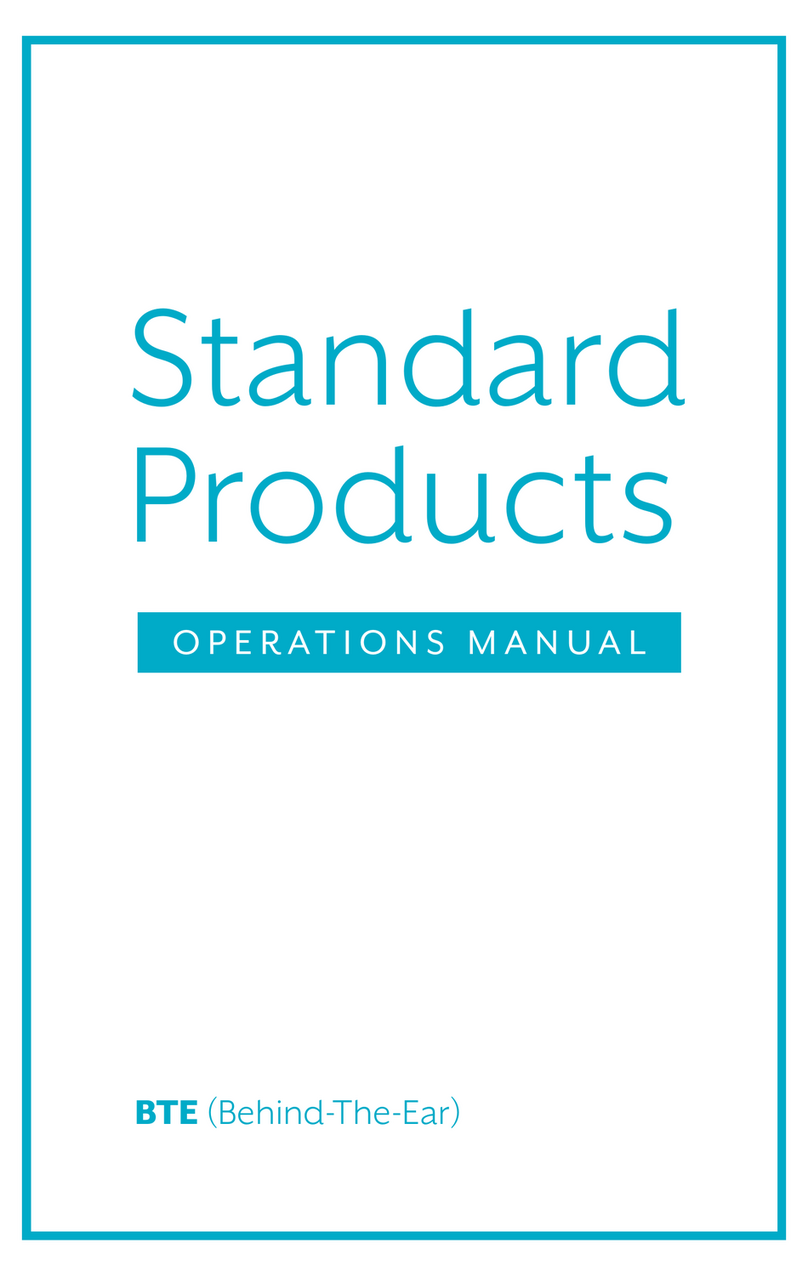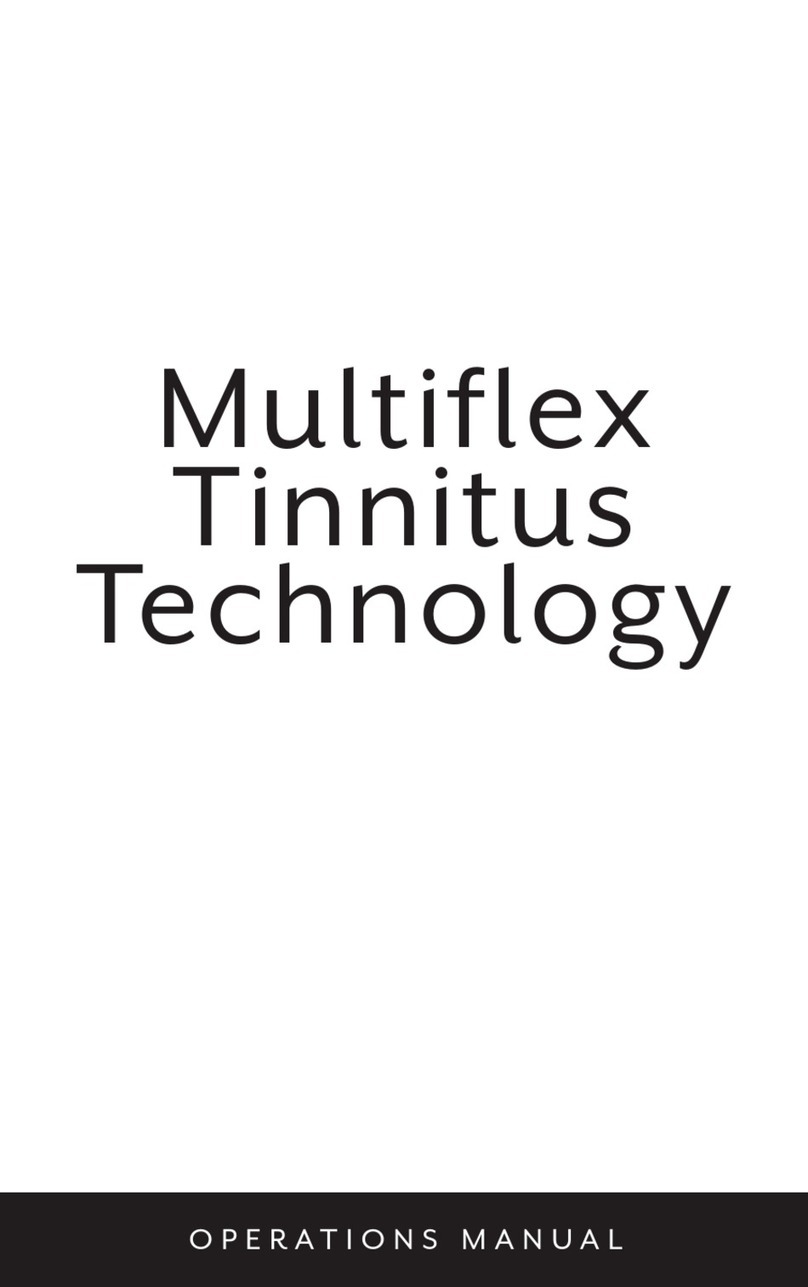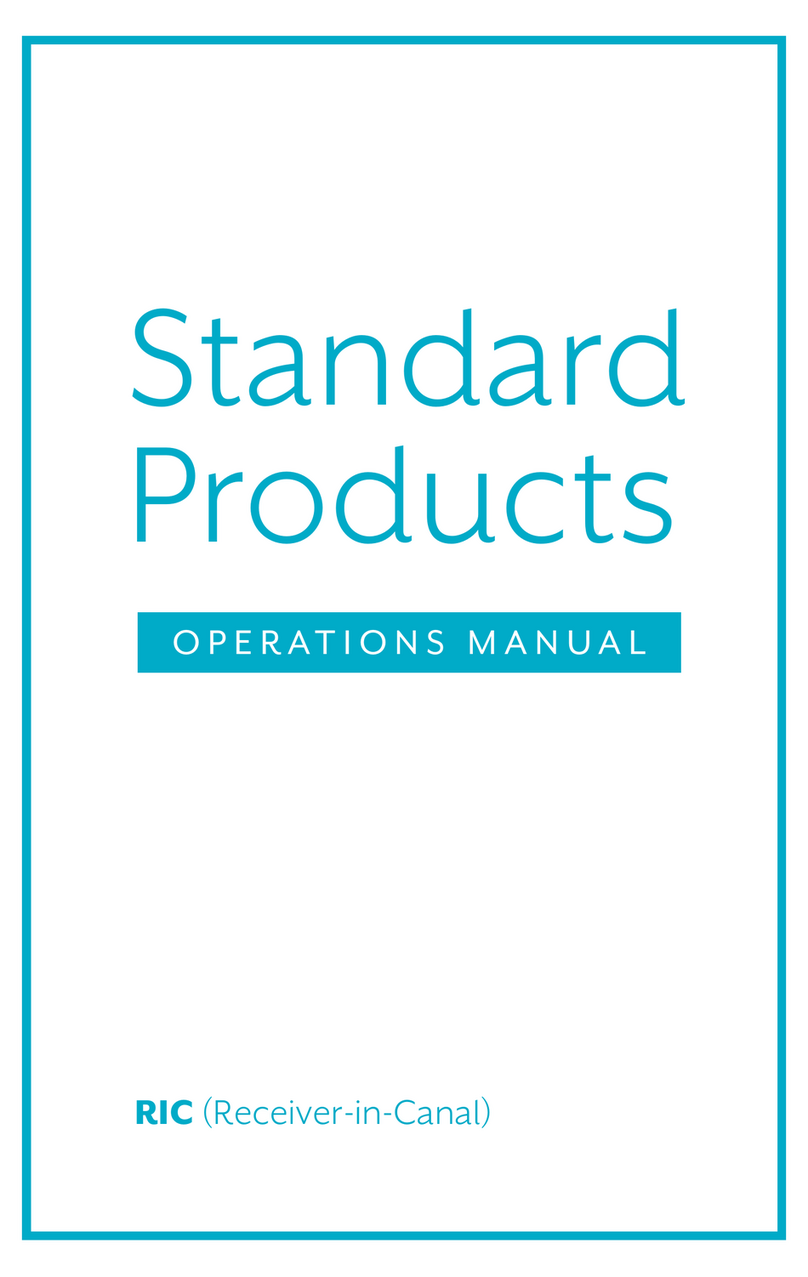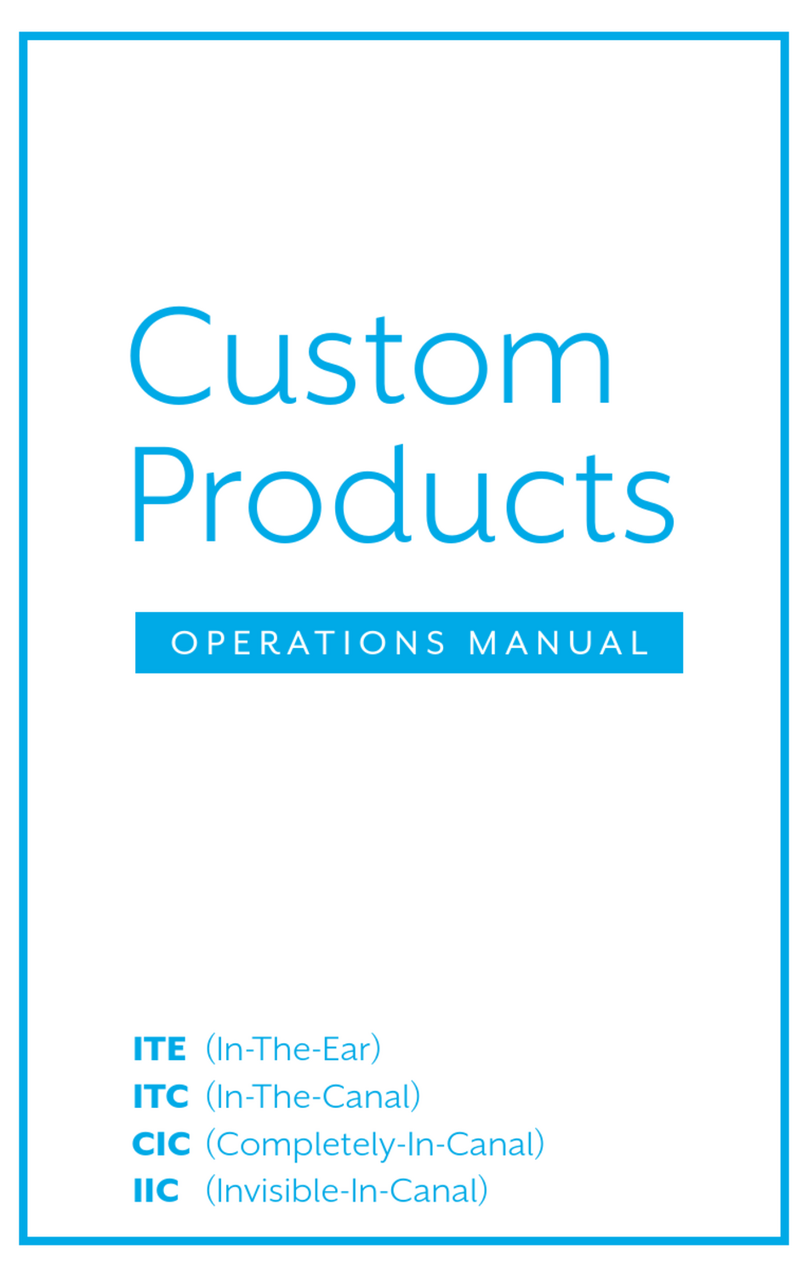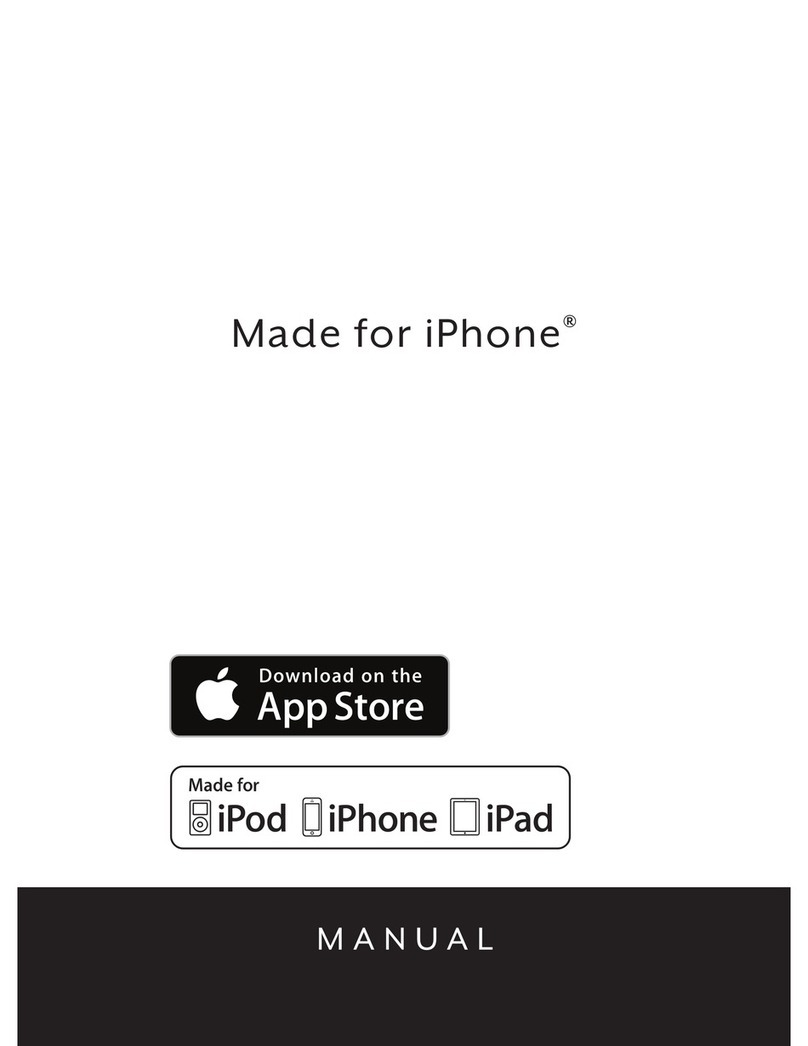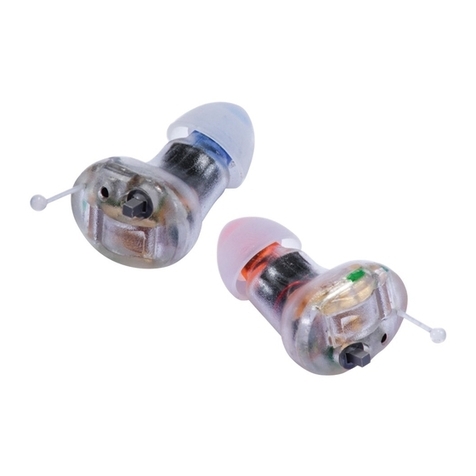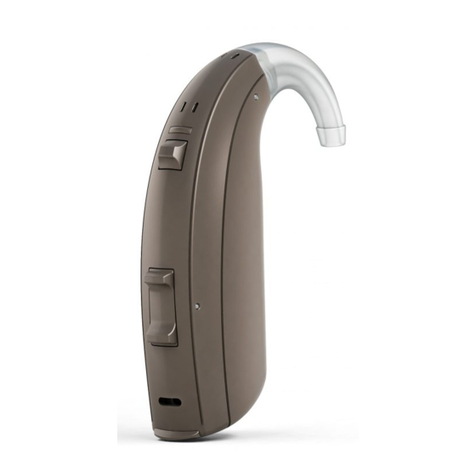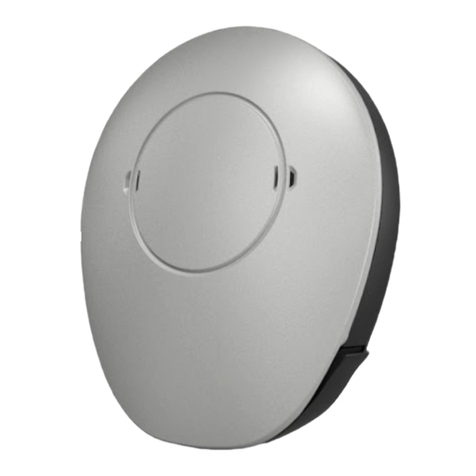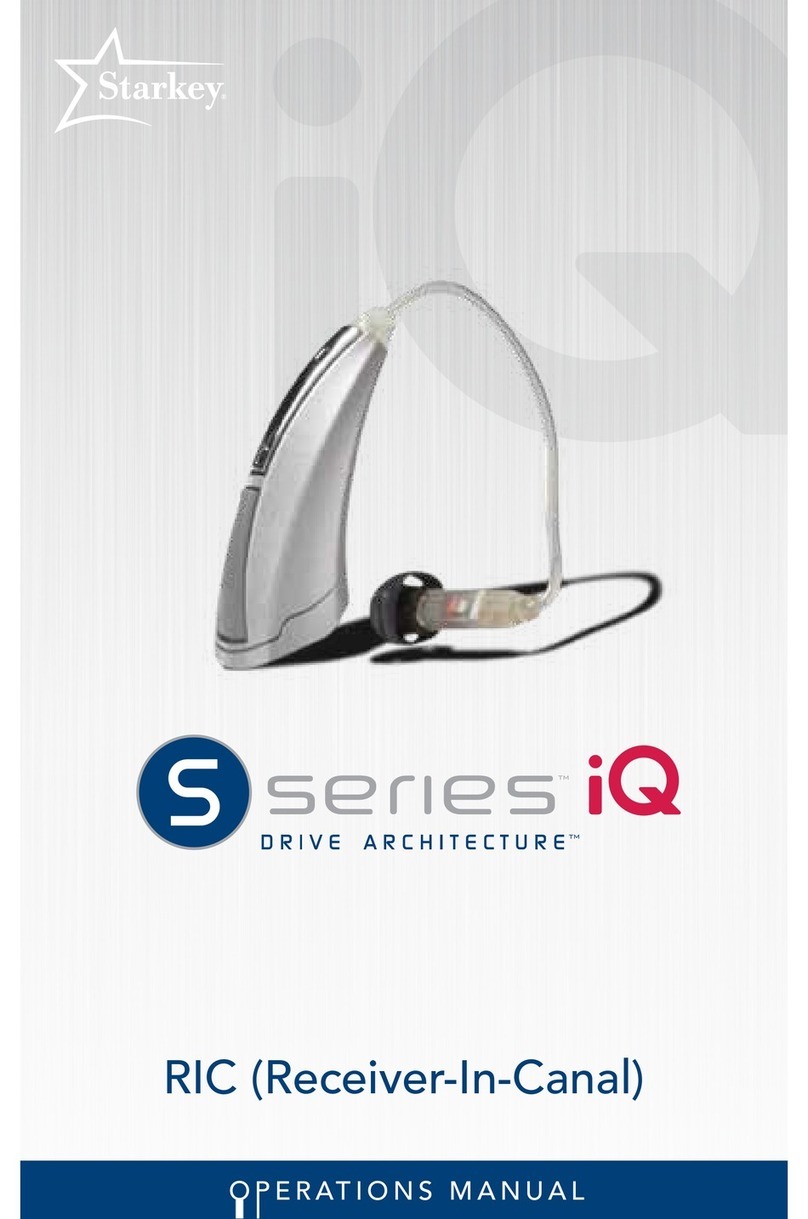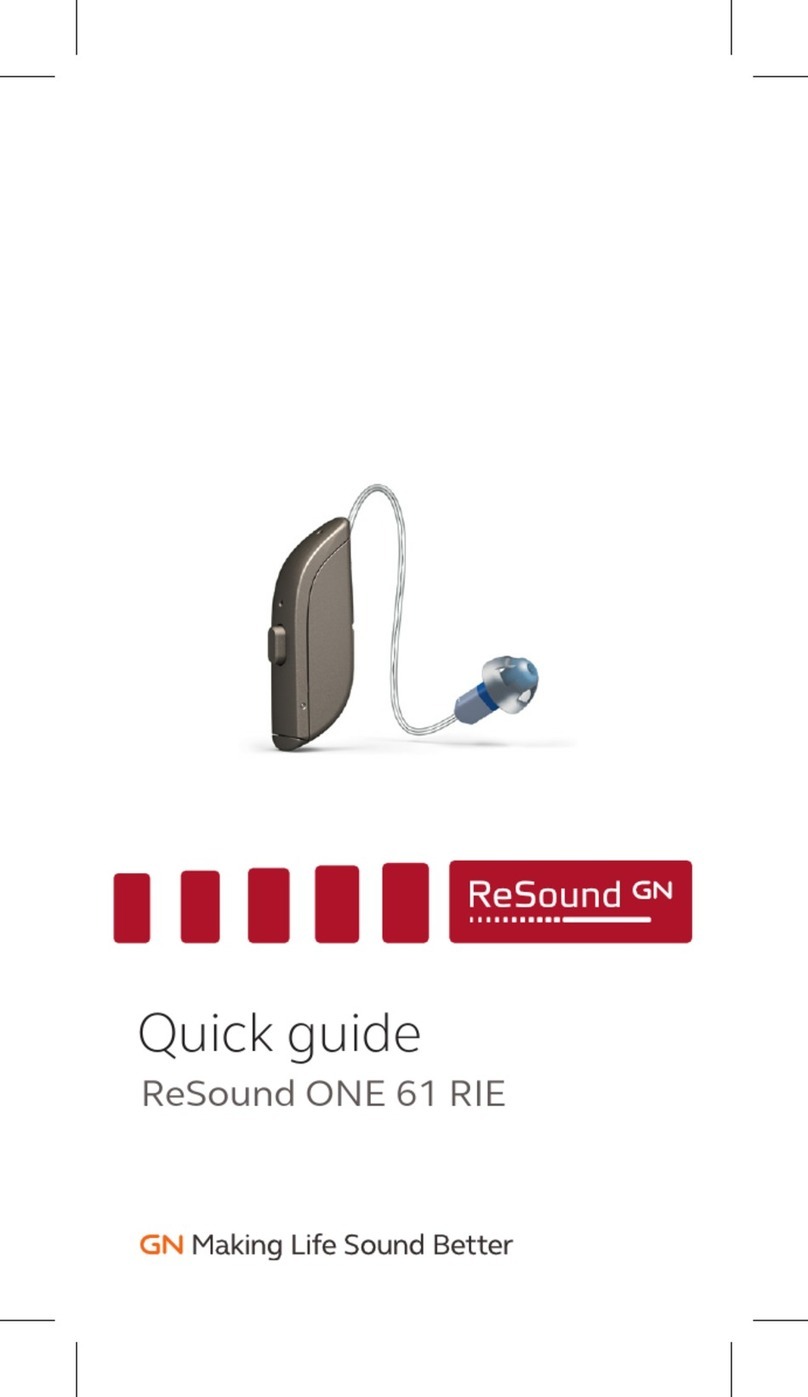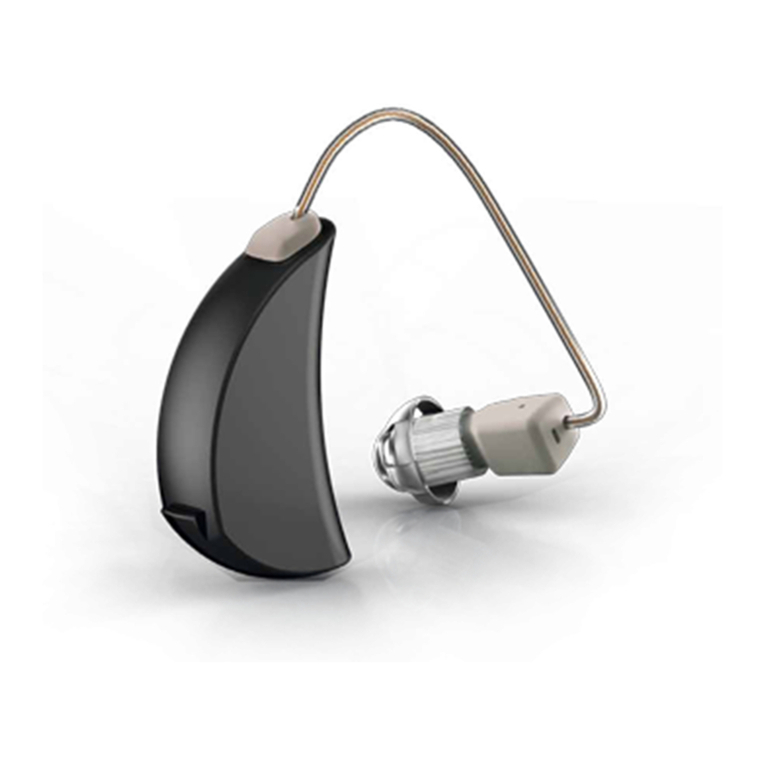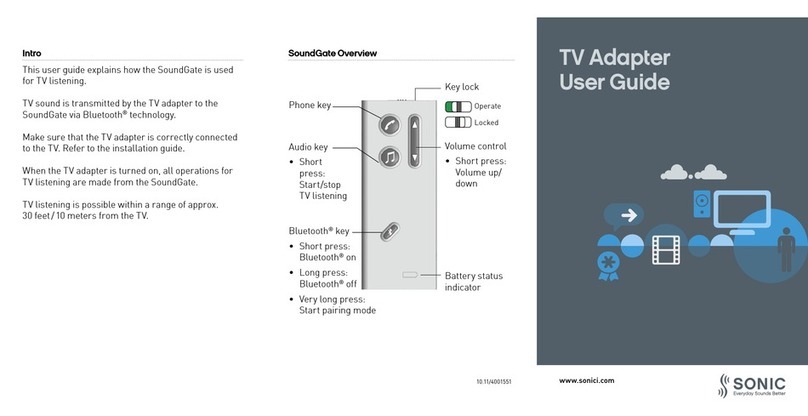34 35
Regulatory Information Regulatory Information
• There is nothing edible in the package, including the desiccant,
cleaning tool, etc.
• Any cords and wall warts must be approved or listed by a Nationally
Recognized Testing Laboratory.
Use on Aircrafts
The optional wireless capabilities that may be featured in your hearing aids can be
used on an aircraft as hearing aids are exempt from the rules applied to other personal
electronic instruments on an aircraft.
International Use
Your hearing aids are approved to operate at a radio frequency that is specific to your
country or region and might not be approved for use outside your country or region.
Be aware that operation during international travel may cause interference to other
electronic instruments, or other electronic instruments may cause interference
to your hearing aids.
We are required by regulations to provide the following warnings:
WARNING: Use of wireless hearing aids directly next to other electronic equipment
should be avoided because it could result in improper performance. If such use is
necessary, note as to whether your hearing aids and the other equipment are operating
normally.
WARNING: Use of accessories, components or replacement parts other than
those provided by the manufacturer of your hearing aids could result in increased
electromagnetic emissions and decreased electromagnetic immunity and could
result in degradation of performance.
WARNING: If Portable Radio Frequency communications equipment is used closer
than 30 cm (12 inches) from your hearing aid, degradation of the performance of your
hearing aid could result. If this occurs, move away from the communications equipment.
DO NOT OPEN HEARING AID OR CHARGER,
NO USER-SERVICEABLE PARTS INSIDE
The Synergy Charger has a rating of IP 5X per IEC 60529. This means that the Synergy
Charger is protected from dust.
The service life of the Synergy Charger is 3 years.
Required Hearing Aid Information
The following additional information is provided in compliance with U.S. Food and Drug
Administration (FDA) regulations:
WARNING TO HEARING AID DISPENSERS
A hearing aid dispenser should advise a prospective hearing aid user to consult
promptly with a licensed physician (preferably an ear specialist) before dispensing a
hearing aid if the hearing aid dispenser determines through inquiry, actual observation
or review of any other available information concerning the prospective user that the
prospective user has any of the following conditions:
i. Visible congenital or traumatic deformity of the ear.
ii. History of active drainage from the ear within the previous 90 days.
iii. History of sudden or rapidly progressive hearing
loss within the previous 90 days.
iv. Acute or chronic dizziness.
v. Unilateral hearing loss of sudden or recent onset within the previous
90 days.
vi. Audiometric air-bone gap equal to or greater than
15 decibels at 500 Hertz (Hz), 1,000 Hz and 2,000 Hz.
vii. Visible evidence of significant cerumen accumulation or a foreign
body in the ear canal.
viii. Pain or discomfort in the ear.
IMPORTANT NOTICE FOR PROSPECTIVE
HEARING AID USERS
Good health practice requires that a person with a hearing loss have a medical
evaluation by a licensed physician (preferably a physician who specializes in diseases of
the ear) before purchasing a hearing aid. Licensed physicians who specialize in diseases
of the ear are often referred to as otolaryngologists, otologists or otorhynolaringologists.
The purpose of the medical evaluation is to assure that all medically treatable conditions
that may affect hearing are identified and treated before the hearing aid is purchased.
Following the medical evaluation, the physician will give you a written statement
that states that your hearing loss has been medically evaluated and that you may be
considered a candidate for a hearing aid. The physician will refer you to an audiologist
or hearing aid dispenser, as appropriate, for a hearing aid evaluation.




















